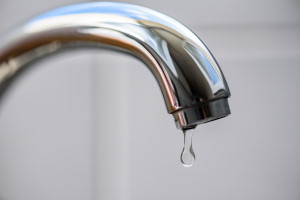Water Conservation
How will water recycling help with reducing freshwater supply shortage?
America faces a freshwater supply shortage that already impacts two of the most populous states, California and Texas, and experts project the problem will only worsen in coming decades. One solution to the challenge involves reclaimed water, which allows organizations and governments to use water recycling to ensure water sustainability and security.
Reclaimed water, or water recycling, involves reclaiming water from a variety of sources and treating it. Cities and businesses then use the water for various purposes, including agriculture, irrigation, groundwater replenishment, industrial processes, and environmental restoration.That limits the use of potable water, conserving it instead for drinking.
It’s a key part of plans to slow the water shortage. It’s an issue as imperative as climate change. A government-backed report in 2019 warned that in as little as 50 years, some regions of the United States may see freshwater supply reduced by as much as one third.
 Some Unsettling Numbers
Some Unsettling NumbersFresh water suitable for drinking is increasingly becoming a scarce commodity even as national water use rates rise by 9% annually.
Some of the numbers around water usage offer a reminder of the enormity of the problem. Two statistics, compiled by Green Biz, show how much drinkable water gets wasted.
Clearly, an opportunity exists in both cases to cut down on the use of drinkable water for non-potable reasons (non-potable simply means water that is not suitable for human consumption). Reclaiming water and using it for these purposes can help solve the problem.
Organizations and governments that commit to using reclaimed water can make a huge impact on water supply. But it takes a widespread effort.
In most cases, water recycling is not used to create potable water for drinking (although it is done in some places). Rather, reclaimed water is used for the purposes listed above at universities and in industry -to handle jobs where non-potable water is OK to use.
These can include the following, according to the U.S. Environmental Protection Agency:
None of the above requires potable water, although the level of treatment will vary. And there are many sources for reclaimed water. They include municipal wastewater, process and cooling water in industry, stormwater, agriculture runoff, and water produced from natural resource extraction activities.
The East Bay Municipal Utility District in California provides an example of a water recycling program in action. The program seeks to conserve drinking water, provide non-potable water for irrigation and industrial operations, and reduce pollution in the San Francisco Bay. The program saves about 5.5 billion gallons of potable water every year. The 2040 goal is to save 7.3 billion gallons annually and supply water to 220,000 residents.
Whatever the exact application of reclaimed water plans, they will become an important part of the nation’s future if we are to maintain water security, sustainability and resilience.